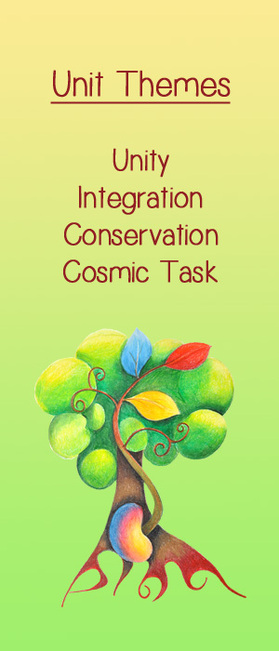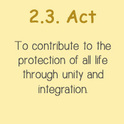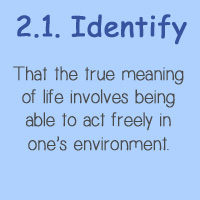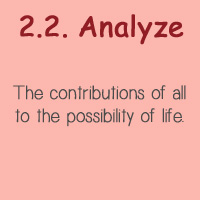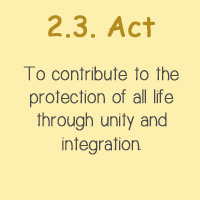Classroom Learning Activities
|
1. Protecting our home, the Earth
Learn how Bouba and Zaza work together to protect the Earth from growing food in a garden and advocating together with other children to protect all life on Earth. Zaza unites all the children in her village to check the health of the water, animals, and birds.
"Bouba & Zaza" is a children's books collection initiated by UNESCO Dakar and the Association for the Development of Education in Africa (ADEA). The aim is to develop quality teaching materials adapted to an African context.
The books are now being adapted to short educational films. This is the first one. |
A person who doesn't know their past, origin, or culture is like a tree with no roots. (Bouba and Zaza's Grandfather)
|
Relevant Convention Articles
Article 1
For the purposes of the present Convention, a child means every human being below the age of eighteen years unless under the law applicable to the child, majority is attained earlier.
Article 6
1. States Parties recognize that every child has the inherent right to life.
2. States Parties shall ensure to the maximum extent possible the survival and development of the child.
Article 29
1. States Parties agree that the education of the child shall be directed to:
(a) The development of the child's personality, talents and mental and physical abilities to their fullest potential
(b) The development of respect for human rights and fundamental freedoms, and for the principles enshrined in the Charter of the United Nations;
(c) The development of respect for the child's parents, his or her own cultural identity, language and values, for the national values of the country in which the child is living, the country from which he or she may originate, and for civilizations different from his or her own;
(d) The preparation of the child for responsible life in a free society, in the spirit of understanding, peace, tolerance, equality of sexes, and friendship among all peoples, ethnic, national and religious groups and persons of indigenous origin;
(e) The development of respect for the natural environment.
2. No part of the present article or article 28 shall be construed so as to interfere with the liberty of individuals and bodies to establish and direct educational institutions, subject always to the observance of the principle set forth in paragraph 1 of the present article and to the requirements that the education given in such institutions shall conform to such minimum standards as may be laid down by the State.
For the purposes of the present Convention, a child means every human being below the age of eighteen years unless under the law applicable to the child, majority is attained earlier.
Article 6
1. States Parties recognize that every child has the inherent right to life.
2. States Parties shall ensure to the maximum extent possible the survival and development of the child.
Article 29
1. States Parties agree that the education of the child shall be directed to:
(a) The development of the child's personality, talents and mental and physical abilities to their fullest potential
(b) The development of respect for human rights and fundamental freedoms, and for the principles enshrined in the Charter of the United Nations;
(c) The development of respect for the child's parents, his or her own cultural identity, language and values, for the national values of the country in which the child is living, the country from which he or she may originate, and for civilizations different from his or her own;
(d) The preparation of the child for responsible life in a free society, in the spirit of understanding, peace, tolerance, equality of sexes, and friendship among all peoples, ethnic, national and religious groups and persons of indigenous origin;
(e) The development of respect for the natural environment.
2. No part of the present article or article 28 shall be construed so as to interfere with the liberty of individuals and bodies to establish and direct educational institutions, subject always to the observance of the principle set forth in paragraph 1 of the present article and to the requirements that the education given in such institutions shall conform to such minimum standards as may be laid down by the State.
Online Resources and References
- American Montessori Society (2002). Montessori Elementary I Different: What Children Study, What Children Do. Also see Montessori Terminology.
- Duffy, D Neil, and Duffy, Michael (2002). Children of the Universe: Cosmic Education in the Montessori Elementary Classroom. Hollidaysburg, PA: Parent Child Press.
- Education International - Peace Education.
- Education Revolution - The Montessori Educational Vision.
- Humanium Help the Children - Right to Life: Understanding children's right to life.
- Ireland Department of Health and Children - The Agenda for Children's Services: A Policy Handbook.
- Miller, John P. and Yoshiharu Nakagawa. (2002). Nourishing the Spiritual Embryo: The Educational Vision of Maria Montessori. Nurturing Our Wholeness: Perspectives on Spirituality in Education. Retrieved from http://www.pathsoflearning.net/articles_Montessori.php.
- Montessori, Mario M. Jr. (1976). Education for Human Development: Understanding Montessori. New York: Schocken Books, NY.
- North American Montessori Center - Montessori Teacher Training: The Purpose of Montessori Cosmic Education.
- Stern, Rebecca. (2006). The Child's Right to Participation - Reality or Rhetoric? Department of Law, Uppsala University, Sweden. Retrieved from http://uu.diva-portal.org/smash/get/diva2:168647/FULLTEXT01.
- UNICEF - The Convention on the Rights of the Child: Survival and developmental rights: the basic rights to life, survival and development of one's full potential.
